Introduction
Organizational stress presents difficulties in defining and measuring it. In literature, the term “stress” designates both the aggressor agent, causative factors and reaction experienced by the individual. The framework agreement concerning stress at work as set out in the electronic user guide for managing stress and psychosocial risks (EU-OSHA 2015) defines stress as “a state accompanied by discomfort or of social, physical, psychological disruption, or resulting from the fact that individuals feel unable to cope pulling away in relation to the requirements or expectations concerning them.” (EU-OSHA 2015, p. 1). Preventing stress at work is one of the main aspects of the fundamental objective of the International Labor Organization to promote more opportunities for both women and men, to get a decent and productive job, in conditions of freedom, equity, security and human dignity. This is because only in the European Union stress at work affects 40 million employees and produces an annual loss of around 20 billion euros.” (ILO 2015)
The present work is part of a broader research which analyzes the situation in the mining and energy sector, represents a novelty in terms of study and apprehend stress as a phenomenon at all viable JIU Valley mining and Branches of Deva Electric Power Factory and Paroşeni Electric Power Factory.
Argument, Methodology and Aria of Research
The pilot study of the research, which we present in this paper, was prepared on the basis of the results obtained as a result of organizational stress questionnaire interpretation, administered during the period 01.05.2015-15.06.2015 from the employees at Exploatarea Miniera Lonea (E.M. Lonea), branch of the Energetic Complex Hunedoara (CEH), one of the viable mines (Bodea et al. 2015).
Morbidity is considered to be an essential indicator of health status; it is representing the phenomenon of illness in a community over a period of time insecurity (Bodea, Bozdog & Burdea 2013; Marica, Irimie & Băleanu 2015). Knowing the economic and social effects of the disease, as well as statistical data on the prevalence of occupational diseases, diseases related to chronic diseases, the indicators of morbidity with temporary incapacity for work (ITM) E.M. Lonea was chosen for the pilot study. Thus, based on the reports on the State of health for 2014, as well as the first semester of the year 2015, it appears that E.M. Lonea, according to severity index is on the first place, having the most numerous days of the ITM, with the most occupational diseases and occupation-related disease; it has the largest gravity index (IG) for tumors, tuberculosis, musculoskeletal diseases at level of CEH. Knowing this reality, our research has as hypothesis the existence of stress factors which contribute to the deterioration of the situation.
The research methodology uses questionnaire as an instrument of research. Organizational Stress Inventory questionnaire (O.S.I.) includes a battery of seven tests with corresponding assessment scale and each test has a different number of items (182 items total), adjusted to the level of understanding of the target group (Irimie et al. 2015, p.64).
After collecting the applied questionnaires, processing was made on the basis of realizing a database and interpreting the results obtained. The research area consists of 334 people, of which 77 subjects represent managerial staff, quality certified by the professional risk assessment in the risk assessment and professional document, as well as 257 subjects- workers employed in various professions named ES. Administered questionnaires were filled out correctly, so valid for 52 people in the category of managerial staff and 103 people in the other category, the rest are partially completed questionnaires and are not valid in statistical processing. This situation is explicable through the great disadvantage of sociological inquest questionnaire based method to self-administration data collection.
The issues covered in the preliminary drawn up questionnaire permit us issuance of hypothesis related to the impact of the three types of stress factors: organizational, group and the individual stress.
The Interpretation of the Results
First, analyzing the demographic factors has taken into account several criteria for structuring the research area: average age, sex, marital status, family supporters, number of children, level of education, seniority, seniority in the workplace, the number of hours that are required to work per week, number of hours per week worked for real, to whom belongs the decision to worked so many hours the post office, job and the level in hierarchy.
The analysis of demographic ES numbering 103 reveals the following situation:
– After sex is divided as follows: 88 male subjects (85.43%) and 15 subjects (14.56%) of the female gender. The high percentage of male staff is due to the specific activity-based minerals extraction of coal operation in the E.M. Lonea.
– The average age of ES in this unit is 42 years, so an advanced age for mining.
– Responses on marital status indicate the following distribution / situation: 83 married subjects (80.58%), 4 subjects (3.88%) in cohabitation with a person, 5 unmarried subjects (4.85%), 7 divorced subjects (6.79%), 1 remarried subject (0.97%), 2 separate subjects (1.94%) and 1 widowed subject (0.97%).
– For employees with a partner with the issue of whether the partner works; thus, for 45 subjects (43.68%), the working partner exists and for 58 subjects (56.31%) the partner does not work, so there is only one breadwinner in the family.
– After the number of children we find that 35 subjects (33.98%) have one child, 36 subjects (34.95%) have two children, seven subjects (6.79%) have 3 children, one subject (0.97%) has 6 children and the remaining 24 subjects (23.30%) are childless.
– The number of dependent children varies from 32 subjects (31.06%) without dependent children up to 6 subjects (5.82%) were preschool children, 15 subjects (14.56%) were preschoolers and schoolchildren, 24 subjects (23.30%) were all school children, 5 subjects (4.85%) have finished school and school children, 10 subjects (9.70%) children had finished school and 11 subjects (10.67%) have dependent children of their partners.
– Level of professional training ES quizzed reflects good preparation, and 45 subjects (43.68%) had high school level, 12 subjects (11.65%) Bachelor, 6 subjects (5.82%) for master, 25 subjects (24.27%) had professional school, 8 subjects (7.76%) have a secondary and 3 subjects (2.91%) studies.
– Regarding the total length of workers analyzed, we found the following distribution: 4 subjects (3.88%) were between 0-5 years old, 11 subjects (10.67%) were 11-15 years old, 16 subjects (15.53%) were 16-20 years old, 34 subjects (33.0%) were between 21-25 years old and 38 subjects (36.89%) were older than 25 years, which shows like the makers that most approaching retirement.
– After seniority at this working place situation topic is 7 subjects (6.79%) were between 0-5 years old to this working place – but over 25 total years old, 6 subjects (5.82%) have a length between 6- 10 years, 12 subjects (11.65%) were 11-15 years old, 22 subjects (21.35%) were 16-20 years old, 31 subjects (30.90%) have a length between 21 -25 years and 25 subjects (24.27%) were older than 25 years on the job, which further demonstrates that the vast majority of subjects was approaching retirement.
– When asked how many hours you are required to work per week? the answers are different depending on the job – underground or surface, and some are random: 77 subjects (74.75%) state that they are required to work 30 hours per week – the underground, one topic (0 97%) say that they are required to work 42 hours per week, 10 subjects (9.70%) state that they are required to work 40 hours per week, 9 subjects (8.73%) state that they are required to work 36 hours per week, 3 subjects (2.91%) state that they are required to work 35 hours per week, one subject (0.97%) state that they are required to work 48 hours per week 1 subject (0.97%) state that they are required to work 54 hours per week and one subject (0.97%) state that they are required to work 56 hours per week.
– Regarding the reality of how many hours per week the subjects work in reality, the following subjects affirmed: 10 subjects (9.70%) state that they are working 40 hours a week, 71 subjects (68.93%) say that they are working 30 hours week, 14 subjects (13.59%) say they work 36 hours per week, 3 subjects (2.91%) state that they are working 35 hours per week, 3 subjects (2.91%) state that they are working 32 hours week, one subject (0.97%) state that they are working 42 hours per week, one subject (0.97%) state that they are working 48 hours a week.
– Concerning aspects of whose decision it is to work so many hours, 23 subjects (22,33%) say it is their choice and 80 subjects (77.66%) say they are requested.
– Distribution of subjects ranging from ES on the job or job they hold is as follows: 4 (3.88%) CFL engineers, 26 (25.24%) miners, 9 (8.73%) support the miners, 6 (5.82%) data operators for mine gas measurements, 6 (5.82%) driller, 14 (13.59%) locksmiths, 3 (2.91%) carriage men, 3 (2.91%) specialists CAMS (ventilation), 5 (4.85%) artificers, 1 (0.97%) signage, 7 (6.97%) electricians, 16 (15.53%) workers and 3 (2.91%) unskilled workers.
Secondly, by processing the responses to questionnaire items ES, this work identifies their perception of organizational stress. Our analysis follows successive chapters of the questionnaire highlighting significant items in terms of the accuracy of the test results and adjusted.
In the chapter relating to the professional satisfaction, shall be considered as scale of assessment for all items analyzed: 1 = very much satisfaction; 2 = a lot of satisfaction; 3 = neither satisfaction nor user dissatisfaction; 4 = a lot of dissatisfaction; 5 = very much dissatisfaction. In terms of communication and the way information circulates at work, an approximate 85% of the interviewed said they had a lot of great satisfaction and did not feel any problem with communication at work. But 7.77% of ES (Figure 1) experience problems in communication. We affirm that generally it is very good communication, establishing a proper relationship and subordinates understand these tasks and execute them very well.
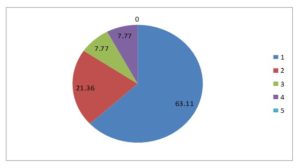
Fig 1. Perception on the communication and the way the information circulates at the workplace
Source: authors
Driving style used by superiors in the ES mining is classified as satisfactory for 58.55% of the subjects and for 48.54% of them the management approach produces much and very much dissatisfaction (Figure 2).
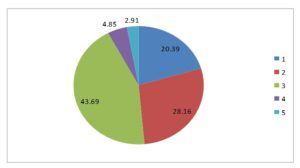
Fig 2. Appreciation of the leadership style used by seniors
Source: authors
This shows that leadership style is a stress factor for most subordinates from this sector. ES respond to item ,,Level to which they feel involved in activity “at a rate of nearly 48% that are satisfied, but this is a contradictory situation looking to the real results, which leads us to believe that their perception of the current situation is socially desirable, but they do not have the courage to affirm felt realities. This masks the existing reality – a continuous stress related to the possibility of job loss and fear to show that the situation cannot cope. In psychological terms, their goal is to preserve self-esteem and the opinion they used to have about themselves, to defuse traumatic psychological moments.
It is about psychological defense mechanisms to eliminate unpleasant or specific interpretation of information, minimizing the feeling of anxiety that arises from the awareness of inner conflict (Figure 3). They are approx. 30% of subjects who are not satisfied with their involvement in the work, following that a further studies to determine the causes of this situation. Moreover, the overall analysis follows the trend of continued decline in satisfaction with their current job.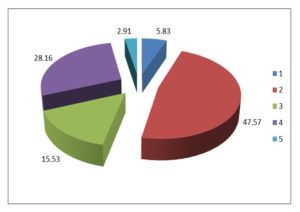
Fig 3. Satisfaction determined by the your currently work
Source: authors
Chapter 2 relating to the perception of the current state of health analyses emotions, feelings and behavior of subjects, which are influenced by the tension they feel at work. The scale of appreciation for all items considered is: 1 = do not know, do not realize; 2 = never; 3 = rarely; 4 = sometimes; 5 = frequently.
For E.M. Lonea ES, the perception of the majority of the population surveyed is that the current state of health is affected by the demands of the workplace. Moreover, under item: When the pressure at work
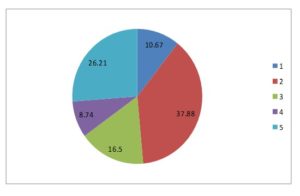
Fig. 4: Perception of health, related to the request at work
Source: authors
Together with those who never find resources and those that rarely find any makes up about 50% worrying situation, showing an inertia in action, or bottlenecks in current tasks. Each individual is a bio-psycho-social entity and uses their own coping mechanisms to achieve adaptation to the environment, here comes the significant differences in the statistical data obtained in research. In this activity, the actual work is very difficult and high-risk conditions state of exhaustion is common. Indicators on the state of safety and health at work and unusually fatigue reflects this. The work itself is not generating stress. Stress is the result of subjective perceptions of environmental factors with which we come into contact. The sensation of overload moments occurs when the work is at a pace that is inappropriate and inconsistent with the employee’s natural biorhythm (4 work shifts).
The aim of Chapter 3 is to investigate in an introspective manner the way OS behave every day, including outside the workplace. The scale of appreciation for all items considered in this chapter: 1 = disagree pronounced; 2 = moderately disagree; 3 = neither agree nor disagree; 4 = moderate agreement; 5 = strong agreement.
We note that the investigated subjects show lack of everyday stress in the proportion of 40.78%, more than a quarter 27.18% are stressed due to personal problems, family, and 12.62% say they are stressed, having a fast rhythm of life, eat, talk and walk fast (Figure 5).
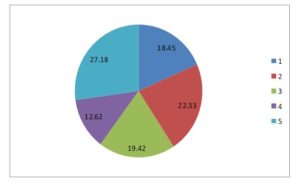
Fig. 5: Perception of daily behavior
Source: authors
Almost anything can be a source of tension (for anyone in particular) at one time proposed consideration of Chapter 4 of the questionnaire administered and individuals perceive different potential sources of pressure. The scale of appreciation for all items considered in this chapter: 1 = definitely not the source voltage; 2 = not generally voltage source; 3 = neutral; 4 = generally a source of tension; 5 = definitely a source of tension.
As it concerns the ES from E.M. Lonea, lack of guidance and insufficient support from superiors is a source of tension for 39.81% of the subjects. While less than a quarter of subjects (24.27%) said the situation is not considered a source of tension. The ambiguity experienced by individuals varies according to personality traits, especially the ability to tolerate. The lack of clarity in defining the role creates both the individual and others’ feelings of insecurity, distrust, irritation or even anger. In literature (Cartwright and Cooper 1997; Cooper, Davidson, and Robinson 1982; EU-OSHA 2000) in addition to the ambiguity of role and role conflict occurs and responsibility as another potential source of stress associated with problems role in the organization. The main consequences of the ambiguity of the role are: disincentive to work and organizational commitment to the emergence intention to leave the job, loss of self-confidence and installing strong feelings of dissatisfaction, anxiety and stress (Figure 6).
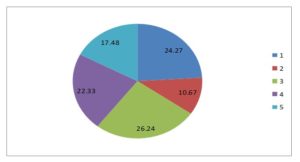
Fig. 6: Perception of guidance and support from superiors
Source: authors
Jobs that show a high degree of physical risk, in this case those in underground work, associated with a degree of overload work when someone must pay for too many tasks in too short a time, are a factor of commonly stress (time pressure), especially in our days organizations, with greatly reduced personal schemes.
Due to the changes occurring to the work place, and the lack of materials to operate under normal circumstances, causes occupational overuse, a tense psycho-social environment and increase job insecurity. Near a third of the people interviewed 31.07% considered change as a tension source, adding new tasks, due to staff shortages and appropriate skills of the staff, 33.98% say in general that changes in requirements out their work are sources of tension and only a small percentage of 16.50% of ES categorically say that these changes in the workplace are not the source voltage (Figure 7).
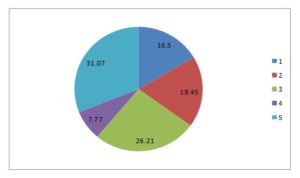
Fig. 7: Perception concerning the source of tension- changes (adding new tasks due to the lack of personnel and personnel qualification) in the requirements of work
Source: authors
Chapter 5 on the perception of ES makers about fighting stress options uses the following rating scale: 1 = never use; 2 = rarely used; 3 = sometimes I use; 4 = very often used; 5 = you always. Possible alternatives to combat the stress considered by the interviewed are: resorting to hobbies and entertainment; resort to physical exercise (swimming, gymnastics, walking, etc.); try to see the situation objectively, I do not give influenced my emotional states; I can organize my time efficiently; talk to supportive friends; plan everything in advance; broaden my interests and activities outside the job; use selective attention (I focus on specific issues); solve problems in order of importance and emergency; I try to sit back and ponder well the situation; I’m looking for as much social support as I can get.
In mining, the usual work is teamwork and therefore 39.80% of ES respondents seek as much social support as they can get, trying to have a more effective communication. Interpretation can be made considering the intervention of the authorized persons to help dealing with technology and hope for a better quality of life. Almost a quarter of the subjects took a neutral position, 21.36% rarely seek and 10.67% do not seek more social support either of disappointment or have alternatives to the current situation (Figure 8).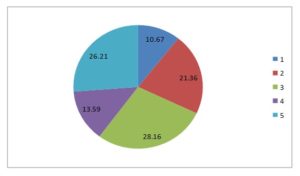
Fig. 8: Perception concerning seeking social support
Source: authors
Chapter 6 investigates the extent to which subjects feel that they master the situation at their workplace. The questions use the following rating scale: 1 = I have no opinion; 2 = pronounced disagreement; 3 = moderately disagree; 4 = moderate agreement; 5 = strong agreement. Over half 50.49% of ES states that they have mastered the situation at work being satisfied with what they have accomplished so far, having a high self-esteem and better managing situations. We believe that “man sanctifies the place”; those kinds of subjects assume responsibilities and are those with which the activity can continue. While nearly a third (29.12%) express a moderate and strong disagreement. The lack of opinion for 20% shows there is a significant group for maneuver or perhaps an amorphous mass (unlucky fate) to whom what happens at their place of work doesn’t matter (Figure 9).

Fig 9. A workplace is what you make of it
Source: authors
Chapter 7 of the questionnaire refers to the subjects’ value in life, what is more important for them. The scale used is as follows: 1 = very important; 2 = important; 3 = medium importance; 4 = very little; 5 = not important at all.
Safety service is for almost all subjects (86.40%) the most cherished thing in life as a supreme value: source of survival, a better quality of life and even the welfare of the family according to the expectations of each individual, 5.83% offer medium importance and the remaining 7.77% consider that it is not at all important (Figure 10).
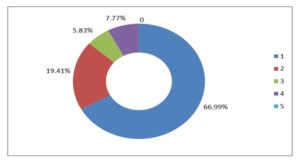
Fig. 10: Perception concerning the safety of job
Source: authors
We must emphasize that every respondent appreciates as significant job security, even if the average age advanced and a share of 24.27% with an age of over 25 years on the job, so close to retirement/out of the system. More information on the closure of mines in the Jiu Valley 2018 is all known.
In fact, this opinion coincides – even though the percentage is higher for analyzed ES (86.40% beside 72%) proving us great worry, stress at workplace, tomorrows and concur with the views of European workers from a recent Pan-European opinion poll (EU-OSHA 2013a, p. 7; EU-OSHA 2013b, p. 6). It shows what European workers think about stress at their workplace and:
- “72% of workers consider the reorganization of the workplace or unsafety at workplace to be one of the most common causes of stress at work;
- 66% attributed to stress because of the “hours worked, or the amount of work”.
For the following item relating to compliance with the valid rules of an organization which should not be violated even where the employee believes that it would be in the interest of the organization, the scale of assessment of the answers is: 1 = strongly agree; 2 = agree; 3 = I can’t decide; 4 = disagree; 5 = strongly disagree.
Thus, we find that more than half of the subjects (48.56%) agree that laws must be respected, even if his system of values does not coincide with these. This is a particularly important aspect for safety of underground employment, implying a little resistance to change and so a better adaptation to the environment and also a better control of the situation, which may lead to a decrease in organizational stress.
There are different opinions about control and in accordance with the model for psychological stress of a person, dependent on the degree to which an individual feels provoked or threatened by the demands of life. A sense of threat occurs when a person doubts his/her ability to overcome major requirements of life. If a person is threatened, it is expected to become anxious or worried. On the other hand, appears a sense of control when he/she thinks he/she can, with considerable effort, to lead life requests and focus on them to have enjoyable experience (Lazarus & Folkman 1984). However, more than one-quarter of the subjects show a strong disagreement when the question of respecting laws is asked, which is a great danger to the work full of risks in mining (Figure 11).
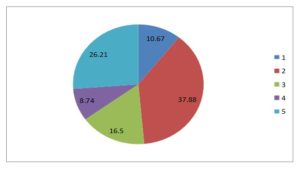
Fig. 11: Perception concerning the valid rules in an institution should not be violated even where the employee believes that it would be in the interest of the organization
Source: authors
Conclusions
Ambiguous organizational stress is defined in certain literature through the hundreds of elaborate definitions is a phenomenon often analyzed. In terms of organization, there are two types of stress: direct- consequence of reducing the number of considered alternatives, less systematic analysis of alternatives, confusion in decision-making; and indirect- appearance of delays, absenteeism, accidents and negative moods in terms of communication.
Our pilot research study confirmed the hypothesis of the existence of stress factors that contribute to the deterioration of the situation of the sector concerned.
A part of demographics/factual data (average age, civil status, family supporters, number of children, education level) reveals the personal aspects that may be stressful causes/ sources outside the organization and others (level of education, seniority, seniority in the workplace, the number of hours that are required to work per week, the number of hours worked per week for real, to whom belongs the decision to work so many hours, the position held) are sources of stress in the workplace. We note that some of the sources (education level, to who belongs the decision to work so many hours) are found in both generating causes of stress.
Moreover, the complexity of the matter stress shows significant influences/ interference between a lot of causes and factors.
The large number of undecided subjects, which the majority of answers chose neutral version can tilt the balance of the results of the study, this can be considered a weak point of the research. Also shows us indifference or non-involvement in the issues that concern them directly on those in the mining field and for the future. What explanation could be? General social perception in Romania about the mining sector and mining occupations, the lack of a long-term energy strategy, political indifference towards the tens of thousands of people who have not provided alternatives for social reinsertion and last but not least a high degree of stress.
Most of the time of stress at work is manifested/ effects even in personal life. This leads to the conclusion that a method of stress management at work has a direct influence on family life, so organizational stress influences individual stress, including creating family discomfort in certain situations.
Job’s safety is the most cherished thing in life for most decision makers questioned, contrary to the current situation in Romanian economy- closure of mines by 2018. From here you can give a great contradiction between expectations and realities which leads to a real source of stress. If we consider the high level of professional risk in the mining sector and continuously due to the stress of this contradiction we can explain the results of the pilot study.
Therefore the paper presents different aspects of perception over the problem of stress in the workplace (causes, effects, measures) in order to realize its presence, to understand the phenomenon of stress in the workplace by employers, employees and to take risk management measures of stress.
Acknowledgment
“This paper was co-financed from the European Social Fund, through the Sectorial Operational Program- Human Resources Development 2007-2013, project number POSDRU/1871/1.5/S/155605 entitled “Scientific excellence, knowledge and innovation through doctoral programs in prioritary domains “, beneficiary “University of Petroșani”.
(adsbygoogle = window.adsbygoogle || []).push({});
References
- Bodea, I., Bozdog, A.F. and Burdea, F. (2013), Stresul, factor de risc important pentru sănătatea şi securitatea în muncă la minele din Valea Jiului, Conference ”Jubiliară a Inspecţiei Muncii, Securitate și Sănătate în Muncă”, 21-23 Octomber 2013, Sibiu, Romania.
- Boldea, I., Irimie, S., Filip, E. and Muntean, L. (2015), Stress Analysis of Issues in the Mining Area, Conference ”Jubiliară a Inspecţiei Muncii, Securitate și Sănătate în Muncă”, 19-21 October 2015, Timisoara, Romania
- Cartwright, S. and Cooper, C. L. (1997) Managing workplace stress, Sage Publications, Inc., Thousand Oaks.
- Company Complexul Energetic Hunedoara S.A. 2015. Available from: <http://www.cenhd.ro>. [20 September 2015].
- Cooper, C. L., Davidson, M. J. and Robinson, P. (1982) ‘Stress in the police service’. Journal of Occupational and Environmental Medicine, 24, 30–36.
- European Agency for Safety and Health at Work (EU-OSHA). (2000), Research on work-related stress, Luxembourg: Office for Official Publications of the European Communities. Available: <http:osha.europa.eu/en/publications/reports/203)>. [22 June 2015].
- European Agency for Safety and Health at Work (EU-OSHA). (2013a), Campaign Guide-Managing stress and psychosocial risks at work, Luxembourg: Office for Official Publications of the European Communities. 21 March 2013, Available: <https://www.healthy-workplaces.eu/en/campaign-material/introducing-the-campaign-guide>. [2 September 2015].
- European Agency for Safety and Health at Work (EU-OSHA). (2013b), Pan-European opinion poll on occupational safety and health’, 21 March 2013. Available: <https://osha.europa.eu/en/safety-health-in-figures>. [2 September 2015].
- European Agency for Safety and Health at Work, (EU-OSHA). (2015), Ghid electronic de gestionare a stresului şi riscurilor psihosociale, Available: <http://eguides.osha.europa.eu/stress/RO-RO/>. [3 Octomber 2015].
- International Labour Organization (ILO) 2015. Available from: <http://www.ilo.org>. [7 September 2015].
- Irimie, S., Muntean, L., Pricope, S. and Irimie, I. S. (2015), ‘Methodological aspects regarding the organizational stress analysis’. ACTA Universitatis Cibiniensis – Technical Series. [Online]. 66 (1), 61–66, doi: 10.1515/aucts-2015-0028. [Retrieved 12 October 2015], Available: <http://www.degruyter.com/view/j/aucts.2015.66.issue-1/aucts-2015-0028/aucts-2015-0028.xml?format=INT.
- Lazarus R. S. and Folkman S. (1984) Stress, Appraisal and Coping, Springer Publishing, New York.
- Marica, L., Irimie, S. and Băleanu, V. (2015). ‘Aspects of Occupational Morbidity in the Mining Sector’, Procedia Economics and Finance, [Online]. 23, 146-151, Elsevier. ScienceDirect, doi:10.1016/S2212-5671(15)00368-8, [Retrieved August 24, 2015], Available:http://www.sciencedirect.com/science/article/pii/S2212567115003688.













